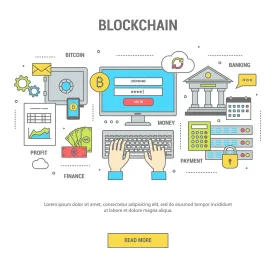The Mobile World Congress Americas (MWCA) brought more than 30,000 attendees together from around the world to discuss the latest technologies, telecommunications developments, and policies last month. The conference, which was held in San Francisco, included a massive exhibition floor, numerous panel events, and countless ancillary networking events. What follows is a top-five round-up of key takeways from MWCA panels, in no particular order.
Blockchain
Right out of the gate, speakers during a blockchain panel made it clear that technologists have much work to do in educating the business community about the capabilities and limitations of blockchain and its most popular application, bitcoin. According to the panelists, the top mistake made by companies is to come to them with a vaguely-formed sense that “we want to do something with bitcoin,” but have little understanding of what bitcoin is, how it differs from other blockchain applications, or whether any such applications would bring value to their particular product or service.
Panelists warned against viewing blockchain technologies as a hammer in search of a nail. It was also noted that, for all the benefits afforded by the decentralized ledger-keeping enabled by blockchain, it also comes with a number of drawbacks and often produces less user-friendly results than do centralized authentication models.
FierceWireless IOT
A FierceWireless breakfast panel discussed the future of Internet of Things (IoT) and connected devices. Participants noted that the network layer represents only about 6-8 percent of the mobile industry, with the remainder divided between platform and application layers, including manufacturers, developers, and others.
The panel, which included wireless executives, agreed that carriers are likely to expand service offerings beyond the network layer to compete in the remaining portions of the market. It was agreed that the primary barriers to enterprise IoT adoption include limited battery capacities and insufficient interoperability between connected devices, including VPN support, cloud service compatibility and other technologies.
VR and Immersive Experiences
The adoption of Virtual Reality (VR) and Augmented Reality (AR) may be hindered by the currently clunky and non-seamless hardware, according to panelists who were also optimistic that enterprise and individual consumers would soon embrace VR/AR technologies, pointing to Apple’s recent initiatives to implement an AR API for mobile devices within the coming years. Participants also noted that the use cases for VR/AR are currently expanding, with business-to-business uses becoming more commonplace in the medical industry with telehealth, and in the travel industry among others. Even documentary and activist filmmakers have been increasingly adopting VR tech in raising awareness of humanitarian needs after the 2015 Nepal earthquake and in cases of wrongfully convicted persons.
Smart Cities
Mayor Andy Berke of Chattanooga discussed his city’s efforts to facilitate 5G deployment, gigabit fiber, and sharing economy technologies. The discussion was especially instructive because Chattanooga, as a historically industrial economy, has taken deliberate steps to modernize their economy. Mayor Berke emphasized that much of the challenge for city-level policymakers involves persuading constituents and stakeholders of the merit of longer term investments in technology-enabling infrastructures, such as smart car connectivity support and smart parking meters. For example, when smart meters are coupled with ridesharing, they can reduce requirements for extensive parking spaces in city planning.
Autonomous Cars and Ridesharing
Participants emphasized that ridesharing technologies increasingly turn on “who’s in the seat” and that the scope of offerings have evolved as the ridership has shifted from early adopters and technophiles to everyday urban professionals. It was suggested that the next phase will turn on providing value to the consumer who is literally “in the seat” – including via in-car entertainment, productivity options, and other value-added items.
Global markets also indicate that urban trends against car ownership appear to be spreading further towards exurban markets. These trends also have implications for city planning, as new city projects no longer require as many parking spaces and ridesharing analytics are used to optimize traffic flow patterns. Finally, participants emphasized the need to continue innovating to provide value to all sides of the sharing economy, including both riders and drivers/asset owners.




 />i
/>i
